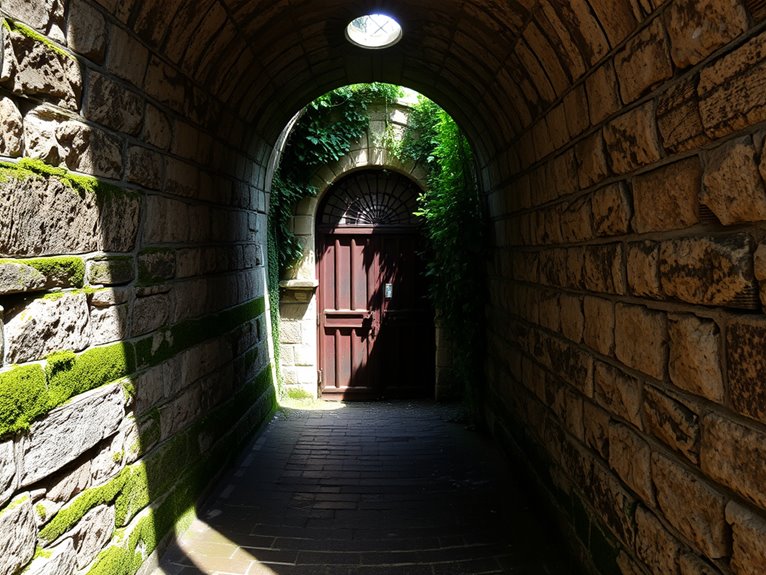
7 Secret Passages in Paris With Fascinating Histories
I'll take you on a journey through Paris's most intriguing hidden passages! From Marie Antoinette's final path at the Conciergerie to the oldest covered arcade, Le Passage des Panoramas, these seven secret corridors tell fascinating stories. You'll discover ancient limestone quarries beneath Notre-Dame, clandestine chambers under Église Saint-Sulpice, and WWII resistance routes in Montmartre. Did you know some passages even have original medieval merchant marks? Let's explore these architectural treasures that most tourists never see.
The Hidden Tunnel of Marie Antoinette at the Conciergerie
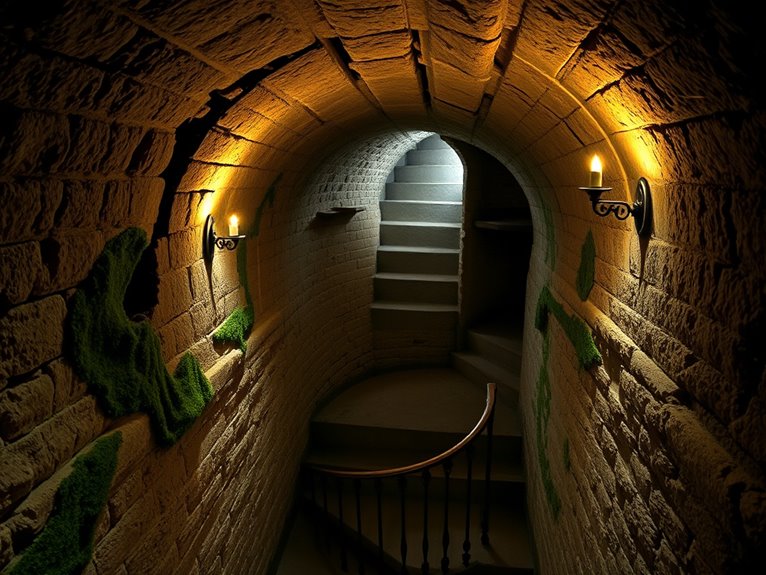
Deep beneath the imposing Gothic architecture of the Conciergerie lies a lesser-known passage that once served as Marie Antoinette's final path during the French Revolution. This underground tunnel, connecting the queen's cell to the Revolutionary Tribunal, represents one of Paris's most poignant historical secrets, offering visitors a rare glimpse into the last days of France's most famous queen.
The tunnel, recently opened to public viewing after extensive restoration, stands as a monument to the dramatic final chapter of the French monarchy. While thousands of tourists flock to the Conciergerie's main chambers daily, this hidden passage provides an intimate and sobering perspective on Marie Antoinette's journey from royal prisoner to her eventual fate at the guillotine.
Quick Facts:
- Opening Hours: 9:30 AM – 6:00 PM (last entry 5:30 PM)
- Admission: Included with Conciergerie ticket (€9.50)
- Best Viewing Times: Early morning or late afternoon
- Photography: Permitted without flash
- Accessibility: Limited, steep stairs involved
- Guide Requirement: Available with specialized tours only
- Duration: 15-20 minutes for tunnel portion
The Tunnel Experience:
The 50-meter passage begins near Marie Antoinette's reconstructed cell, descending through narrow stone corridors that maintain their 18th-century character. Original architectural elements include period-specific torch holders and worn stone steps that Marie Antoinette herself traversed. Insider tip: Look for the small crosses etched into the walls by other prisoners, often overlooked by casual visitors.
Prison Cell Connection:
The tunnel links directly to Marie Antoinette's cell, where a memorial chapel now stands. The cell area has been recreated to reflect its 1793 condition, complete with period furniture and personal items. Lesser-known fact: The original cell was actually larger than the current recreation, having been divided during later prison renovations.
Revolutionary Tribunal Route:
The final section emerges near the location of the Revolutionary Tribunal, where Marie Antoinette faced her accusers. The passage features interactive displays detailing the queen's trial and final hours. Secret detail: A barely visible royal fleur-de-lis remains carved into one of the tunnel's stone blocks.
Pro Tips:
Book a specialized "Hidden Passages" tour that includes both the tunnel and restricted areas of the Conciergerie. These tours, available in English and French, offer detailed historical context and access to sections normally closed to the public. Visit during shoulder season (March-April or September-October) when crowds are thinner and the underground passages maintain a comfortable temperature.
Practical Advice:
Wear comfortable, flat shoes with good grip, as the tunnel's original stone flooring can be uneven and sometimes slippery. Bringing a light jacket is recommended, as underground temperatures remain cool year-round. Visitors with claustrophobia or mobility issues should be aware that the passage includes narrow sections and steep stairs. Pre-booking is essential during peak season, with morning tours typically offering the most intimate experience.
Le Passage Des Panoramas: Paris's Oldest Covered Arcade
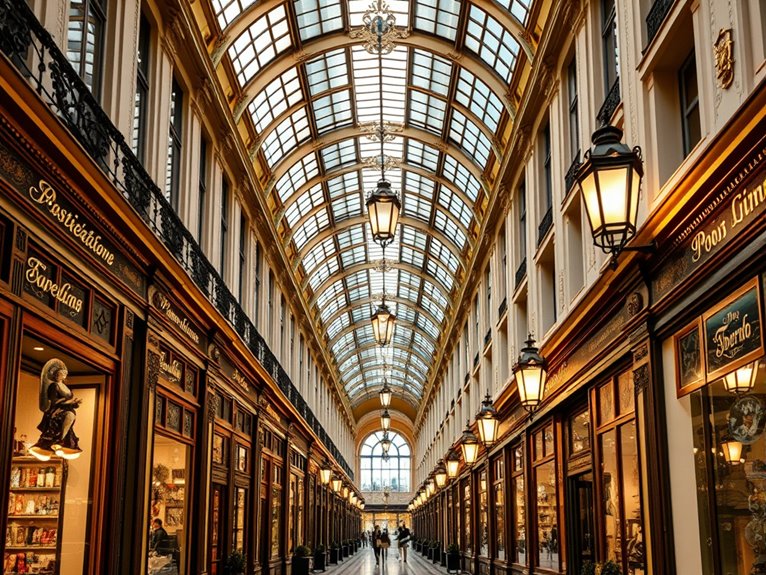
Built in 1799, Le Passage des Panoramas stands as Paris's oldest covered passage and a living representation of the city's architectural evolution. This historic arcade, located in the 2nd arrondissement, captivates visitors with its Belle Époque charm, intricate ironwork, and glass-roofed gallery that has witnessed over two centuries of Parisian life.
Beyond its historical significance, the passage offers a unique shopping and dining experience, housing an eclectic mix of vintage stamp shops, traditional printing houses, and contemporary restaurants. The preserved 19th-century storefronts, original gas lamps, and mosaic floors transport visitors to an era when these covered passages served as the precursors to modern shopping malls.
Quick Facts:
- Opening Hours: Daily 6:00 AM – 12:00 AM
- Location: 11-13 Boulevard Montmartre, 75002 Paris
- Best Time to Visit: Early morning or late afternoon on weekdays
- Photography: Permitted, best lighting mid-morning
- Accessibility: Wheelchair accessible
- Notable Features: Original glass roof, period shopfronts, mosaic flooring
Notable Establishments:
Stern Graveur (Historic Engraving Shop)
This traditional engraving house has operated since 1834, offering bespoke stationery and business cards. The original wooden cabinets and antique equipment remain intact, providing a glimpse into traditional French craftsmanship. Insider tip: Request a demonstration of their vintage printing processes – most artisans are happy to show their techniques.
L'Arbre à Cannelle (Restaurant)
Housed in an original 19th-century shopfront, this contemporary restaurant combines modern French cuisine with historical ambiance. Reservations recommended for dinner service. Unique feature: The restaurant's ceiling still bears the original painted advertisements from the 1800s.
Théâtre des Variétés
The passage connects to this historic theater, built in 1807. The theater entrance retains its original ornate decoration and continues to host performances. Lesser-known fact: Hidden doors in the passage once served as discrete entrances for VIP theater-goers.
Pro Tips:
Visit during the "golden hour" (just before sunset) when the natural light filtering through the glass roof creates magical photography opportunities. The passage is less crowded during lunch hours on weekdays, offering better chances to explore the historic shopfronts and architectural details without tourist groups. Consider visiting during light rain – the glass roof provides shelter while creating a uniquely romantic atmosphere.
Practical Advice:
Many shops in the passage observe traditional French business hours, closing for lunch (typically 1:00-3:00 PM) and on Sundays. Some restaurants require reservations, especially during peak tourist season (June-August). While the main passage is wheelchair accessible, some individual shops may have steps. Bring cash for smaller purchases, as not all vintage shops accept cards.
The Underground Network of Les Carrières
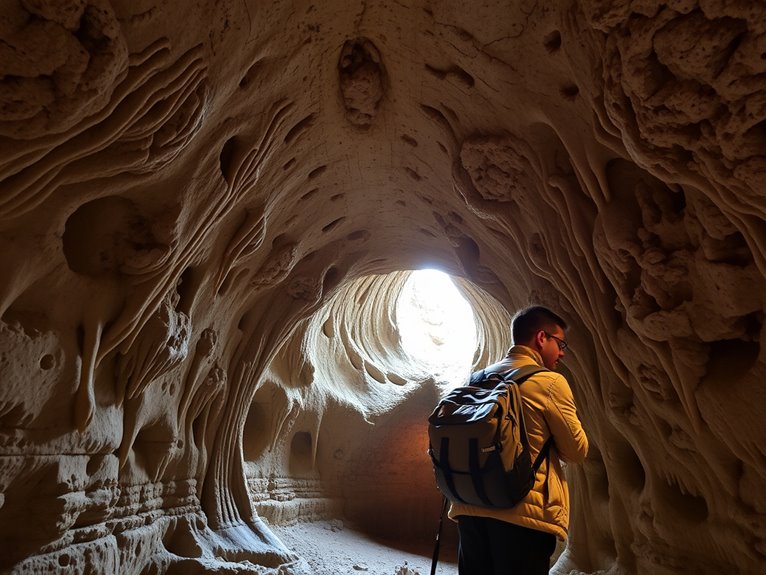
Beneath the bustling streets of Paris lies a mysterious labyrinth of ancient limestone quarries, known as Les Carrières, spanning over 300 kilometers of tunnels and passageways. These underground networks, dating back to Roman times, provided the iconic cream-colored stone that built much of historical Paris, including Notre-Dame Cathedral and the Louvre. Today, these subterranean passages tell tales of geological history, architectural innovation, and human ingenuity.
While a small section is famous as the Catacombs, the vast majority of Les Carrières remains off-limits to the public, accessible only through special permits or guided archaeological tours. These restricted areas harbor everything from World War II bunkers to mushroom farms, and even modern-day cataphiles (urban explorers) who navigate the maze-like network through secret entrances scattered throughout the city.
Quick Facts:
- Visiting Hours: Official tours run Tuesday-Sunday, 10:00-20:30
- Cost: €16-29 depending on tour type
- Photography: Allowed without flash; tripods require special permission
- Physical Requirements: Ability to walk 2km and climb steep stairs
- Temperature: Constant 14°C (57°F)
- Safety: Only visit with authorized guides
- Language: Tours available in French and English
Official Catacombs Entry
The main entrance at 1 Avenue du Colonel Henri Rol-Tanguy provides the only legal access point for general visitors. This section features well-lit passages, informative plaques, and professionally maintained walkways. Tours last approximately 45 minutes and descend 131 steps below street level.
Insider tip: Book tickets online for the first or last tour of the day to avoid the longest queues.
Geological Formations
The limestone quarries reveal millions of years of geological history through visible layers of marine sediments and fossils. Special geological tours highlight unique formations, including underground springs and natural caves.
Insider tip: The "Miller's Cave" section contains rare crystalline formations only visible under UV light.
Historical Wartime Shelters
During World War II, portions of Les Carrières served as bomb shelters and resistance hideouts. Some areas still contain original markings, supplies, and modifications from this period.
Insider tip: Look for the arrow markings in red paint, which were used as emergency evacuation routes.
Pro Tips:
The ideal time to explore Les Carrières is during weekday mornings in off-season months (October-March). Bring a light jacket regardless of surface temperature, as the underground climate remains cool year-round. Professional photographers should request special permits at least three weeks in advance for extended shooting sessions or specialized equipment use.
Practical Advice:
Wear sturdy, water-resistant shoes with good grip, as some passages can be slippery. Bring a small flashlight as backup, even on official tours. Those prone to claustrophobia should be aware that some passages are narrow and ceiling heights vary. Most importantly, never attempt to enter unauthorized sections – not only is it illegal, but the complex network of tunnels can be extremely dangerous without proper guidance and equipment.
The Secret Chambers of Église Saint-Sulpice
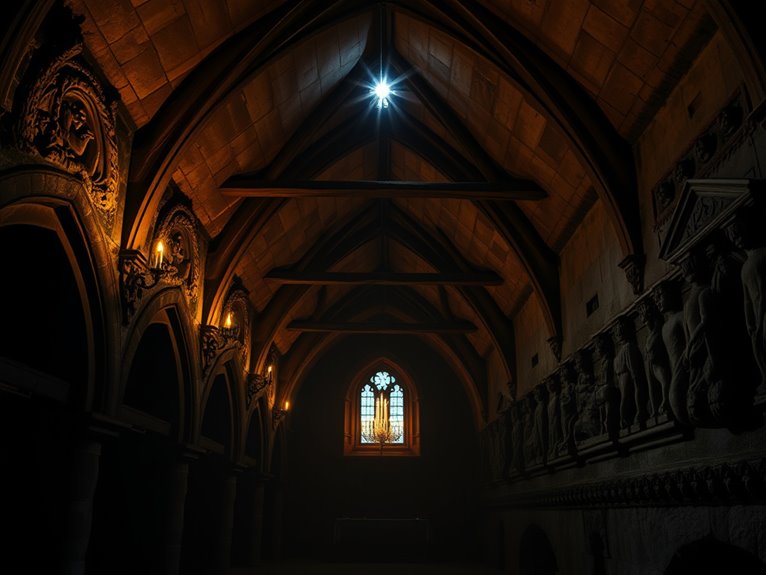
Deep beneath the magnificent Église Saint-Sulpice, a network of secret chambers tells tales of ecclesiastical intrigue and wartime resistance. These hidden spaces, largely unknown to the millions who visit this 17th-century church annually, served multiple clandestine purposes throughout history, from protecting religious artifacts during the French Revolution to sheltering resistance fighters in World War II.
The chambers, accessible through discrete entrances concealed behind baroque architectural elements, comprise a series of interconnected rooms, narrow passages, and even a small chapel. While some areas remain off-limits to the public, guided tours now allow visitors to explore select portions of this underground labyrinth, offering glimpses into centuries of hidden Parisian history.
Quick Facts:
- Visiting Hours: Tuesday-Saturday, 10:00-16:00 (guided tours only)
- Cost: €15 for standard tour, €25 for extended tour
- Photography: Limited, no flash allowed
- Tour Duration: 45 minutes (standard) or 90 minutes (extended)
- Physical Requirements: Must be able to navigate narrow stairs and uneven surfaces
- Languages: French and English tours available
- Advance Booking: Required at least 48 hours ahead
The Medieval Chamber
This oldest section dates to the 13th century, predating the current church structure. Originally used as a storage vault for church valuables, its thick stone walls and hidden entrance made it ideal for protecting religious artifacts during turbulent times. Located 20 feet below the church's south transept, this chamber features original medieval stonework and mysterious carved symbols. Insider tip: Look for the mason's marks near the entrance – these signatures of medieval craftsmen are rarely pointed out on standard tours.
The Resistance Room
During World War II, this chamber served as a meeting point for French Resistance members. The room contains original radio equipment and period furniture, preserved exactly as it was left in 1944. Tour guides demonstrate how resistance fighters used an ingenious system of pulleys to communicate with lookouts above ground. Insider tip: The loose stone in the corner, when removed, reveals a message box used by resistance members.
The Secret Chapel
This intimate worship space, hidden behind a false wall, was used for clandestine masses during the French Revolution. The chapel features original 18th-century frescoes and a small altar. Its acoustics are remarkable – whispers from the altar can be heard clearly at the entrance. Insider tip: Visit during the extended tour to see the recently discovered priest's hiding hole behind the altar.
Pro Tips:
The chambers maintain a constant temperature of 15°C (59°F) year-round, so bringing a light jacket is advisable. For the best experience, book the first morning tour when the chambers are least crowded and the air is freshest. Photography enthusiasts should bring fast lenses suitable for low-light conditions, as artificial lighting is minimal to preserve the historical atmosphere.
Practical Advice:
Wear comfortable, non-slip shoes with good ankle support, as the floors can be uneven and sometimes damp. Some passages are narrow and ceiling heights vary, so those with claustrophobia or mobility issues should consider the virtual tour option available at the church's visitor center. Bringing water is not allowed in the chambers, but tours include regular breaks in designated areas where refreshments are permitted.
Le Passage Du Grand Cerf's Forgotten Walkways
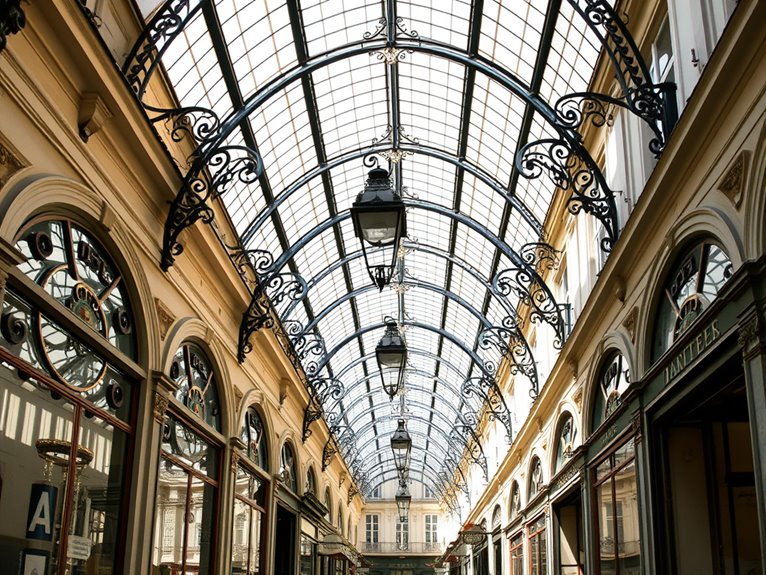
Hidden within Paris's 2nd arrondissement, Le Passage du Grand Cerf stands as one of the city's most enchanting covered passages, yet remains delightfully under-visited by tourists. This nineteenth-century arcade, with its soaring glass ceiling and intricate ironwork, represents a perfect example of Paris's historic shopping galleries, connecting Rue Saint-Denis to Rue Dussoubs through a mesmerizing architectural timeline.
Originally constructed in 1825, this 12-meter-high passage houses three levels of artisanal boutiques, design workshops, and creative spaces that tell the story of both historical and contemporary Paris. The careful preservation of original features alongside modern artistic enterprises creates an atmosphere that captures the essence of hidden Paris, making it an essential stop for those seeking to explore the city's lesser-known architectural treasures.
Quick Facts:
- Best visiting hours: Tuesday-Saturday, 8:30 AM – 8:30 PM
- Photography: Permitted, best lighting mid-morning
- Access: Free
- Nearest Metro: Étienne Marcel (Line 4)
- Peak times: Weekday afternoons
- Wheelchair accessible: Limited
- Shopping: Most shops open 11 AM – 7 PM
- Photography conditions: Natural light through glass roof
The Main Arcade
The central walkway stretches 120 meters, featuring original mosaic flooring and cast-iron details that exemplify 19th-century Parisian craftsmanship. The passage houses approximately 20 boutiques, each carefully selected to maintain the arcade's artistic character. Located at 145 Rue Saint-Denis, the entrance is marked by an understated yet elegant façade that's easy to miss if you're not looking for it. Insider tip: Visit during rainfall to experience the magical acoustics of rain on the glass roof while staying perfectly dry.
The Upper Galleries
The often-overlooked upper levels of Le Passage du Grand Cerf contain artists' workshops and design studios, occasionally open to the public during special events. While not always accessible, these spaces can be viewed from below through their wrought-iron balconies. The third floor, in particular, offers glimpses into working ateliers through large windows. Insider tip: Visit during the annual "Journées du Patrimoine" (Heritage Days) in September when many typically private spaces open their doors.
Pro Tips:
For the best photographic opportunities, arrive just as shops begin opening around 11 AM, when morning light streams through the glass ceiling but before the lunch crowd arrives. Consider visiting during winter months when the passage serves as a warm, sheltered respite from the weather, and the holiday decorations add an extra layer of charm to the already magical atmosphere.
Practical Advice:
While exploring Le Passage du Grand Cerf, remember that it's still a working commercial space with residents living above. Many shops close for lunch between 1-2 PM, and some observe traditional French holiday closures. Bring cash as smaller boutiques may not accept cards below certain amounts. For the fullest experience, combine your visit with other nearby covered passages like Passage du Caire or Passage des Panoramas, creating your own secret passage walking tour.
The Resistance Pathways of Montmartre
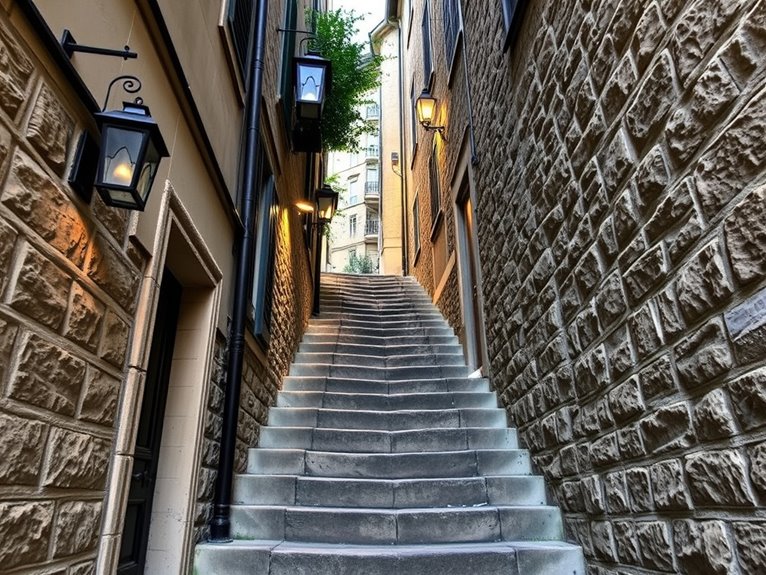
During World War II, the cobblestone streets and hidden passages of Montmartre became essential lifelines for the French Resistance. These lesser-known pathways, winding through the 18th arrondissement's iconic hillside, served as escape routes, meeting points, and secret communication channels for resistance fighters opposing Nazi occupation. Today, these historical passages offer visitors a powerful glimpse into Paris's wartime history.
Walking these resistance pathways reveals a different side of Montmartre beyond its artistic heritage and tourist attractions. Hidden staircases, concealed courtyards, and underground passages tell stories of courage, resilience, and the neighborhood's significant role in the liberation of Paris. These routes connected safe houses, weapons caches, and makeshift printing operations for resistance newspapers.
Quick Facts:
- Best visiting hours: Early morning (7-9 AM) or late afternoon (4-6 PM)
- Guided tour costs: €15-35 per person
- Photography: Permitted in public areas, restricted in private passages
- Walking difficulty: Moderate to challenging (steep hills)
- Seasonal availability: Year-round, but best weather March-October
- Tour duration: 2-3 hours average
Notable Resistance Pathways:
Passage des Abbesses
A narrow corridor connecting Rue des Abbesses to Rue André Antoine served as a key escape route for resistance members. This passage, still accessible today, features original cobblestones and period architecture. The entrance is marked by a discrete plaque near 36 Rue des Abbesses. Insider tip: Look for the faded resistance symbols still visible on certain doorways.
Villa des Arts
This hidden courtyard complex housed several resistance members who used their artist status as cover. The location offered multiple escape routes through interconnected buildings. Open daily 9 AM-6 PM (except during private events). Insider tip: The back wall features a concealed door that led to an underground tunnel system.
Rue Saint-Vincent Passages
A network of steep staircases and passages near the Montmartre vineyard provided perfect surveillance points and quick escape routes. These paths connected multiple safe houses and meeting locations. Insider tip: Visit the small garden at number 23, which concealed a weapons cache beneath its grape arbor.
Pro Tips:
For the most authentic experience, visit during early morning hours when modern crowds are minimal and the historic atmosphere is most palpable. Consider hiring a specialized guide with resistance history expertise, as many significant locations are easily missed without proper knowledge. Several local historical societies offer detailed maps marking verified resistance locations and provide context about specific events that occurred along these routes.
Practical Advice:
Wear comfortable walking shoes with good grip, as many original pathways feature uneven surfaces and steep inclines. Bring water and be prepared for limited access to public facilities along these historic routes. Some passages require advance permission or are accessible only through organized tours, so research access requirements beforehand. Photography restrictions apply in certain areas, particularly those involving private residences that played historical roles.
The Medieval Tunnels Beneath Place Des Vosges
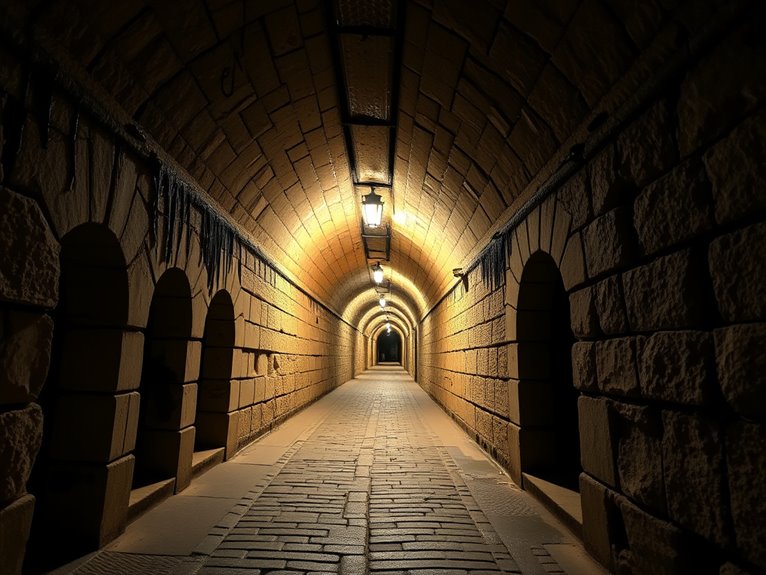
Beneath the elegant red-brick facades and manicured gardens of Place des Vosges lies a hidden world of medieval tunnels, offering a glimpse into Paris's mysterious underground heritage. These centuries-old passages, dating back to the 13th century, once served as escape routes for nobility and secret pathways for merchants, creating an intricate network that tells tales of intrigue, commerce, and survival.
The tunnel system, stretching approximately 1.5 kilometers beneath the historic square, represents one of the best-preserved medieval underground networks in Paris. While many similar passages have been sealed or destroyed over time, these tunnels maintain their original limestone architecture and contain remarkable historical artifacts, from ancient wine cellars to forgotten chambers that once housed royal guards.
Quick Facts:
- Visiting Hours: Tuesday-Sunday, 10:00-16:00 (guided tours only)
- Cost: €25 per person (€15 for students)
- Tour Duration: 90 minutes
- Group Size: Maximum 8 people
- Required Equipment: Comfortable shoes, light jacket
- Physical Demands: Must be able to walk for 90 minutes and climb steep stairs
- Photography: Limited, no flash photography allowed
- Advance Booking: Required, minimum 48 hours
Main Access Point – Pavilion de la Reine
The primary entrance to the tunnels lies within the historic Pavilion de la Reine, accessed through an unmarked door in the building's cellar. The 17th-century pavilion itself serves as an excellent orientation point, with expert guides providing historical context before descent. Insider tip: Request the "extended royal route" when booking – it includes access to a recently discovered chamber believed to be King Henri IV's private meditation room.
The Merchant's Gallery
This 200-meter stretch features the remains of medieval shops and storage spaces, with visible merchant marks still carved into the walls. The tunnel maintains a constant temperature of 14°C (57°F) year-round, making it perfect for wine storage during the Middle Ages. Insider tip: Look for the "three crosses" marking near the third archway – it's believed to indicate a secret entrance to an unmapped passage.
Royal Escape Route
The most dramatic section of the tunnel system, this carefully engineered passage provided safe passage for royalty during times of unrest. Notable features include original torch holders and cleverly designed acoustic chambers that allowed guards to hear approaching footsteps. Insider tip: At marker point 23, there's a small opening that perfectly frames the Tower of the Temple when viewed from below.
Pro Tips:
For the most atmospheric experience, book the first morning tour when the tunnels are at their quietest and the air is crispest. Serious photographers should consider the special photography tours offered on the first Thursday of each month, which allow tripods and provide additional lighting equipment. These specialized tours must be booked at least three months in advance and are limited to six participants.
Practical Advice:
Visitors should wear sturdy, non-slip shoes and bring a light jacket regardless of the season. While the tunnels are well-maintained, they can be slippery and cool. Those with claustrophobia or mobility issues should be aware that some passages are narrow and require maneuvering steep medieval stairs. It's recommended to book tours at least two weeks in advance during peak tourist season (June-September) and to arrive 15 minutes early for the mandatory safety briefing.
